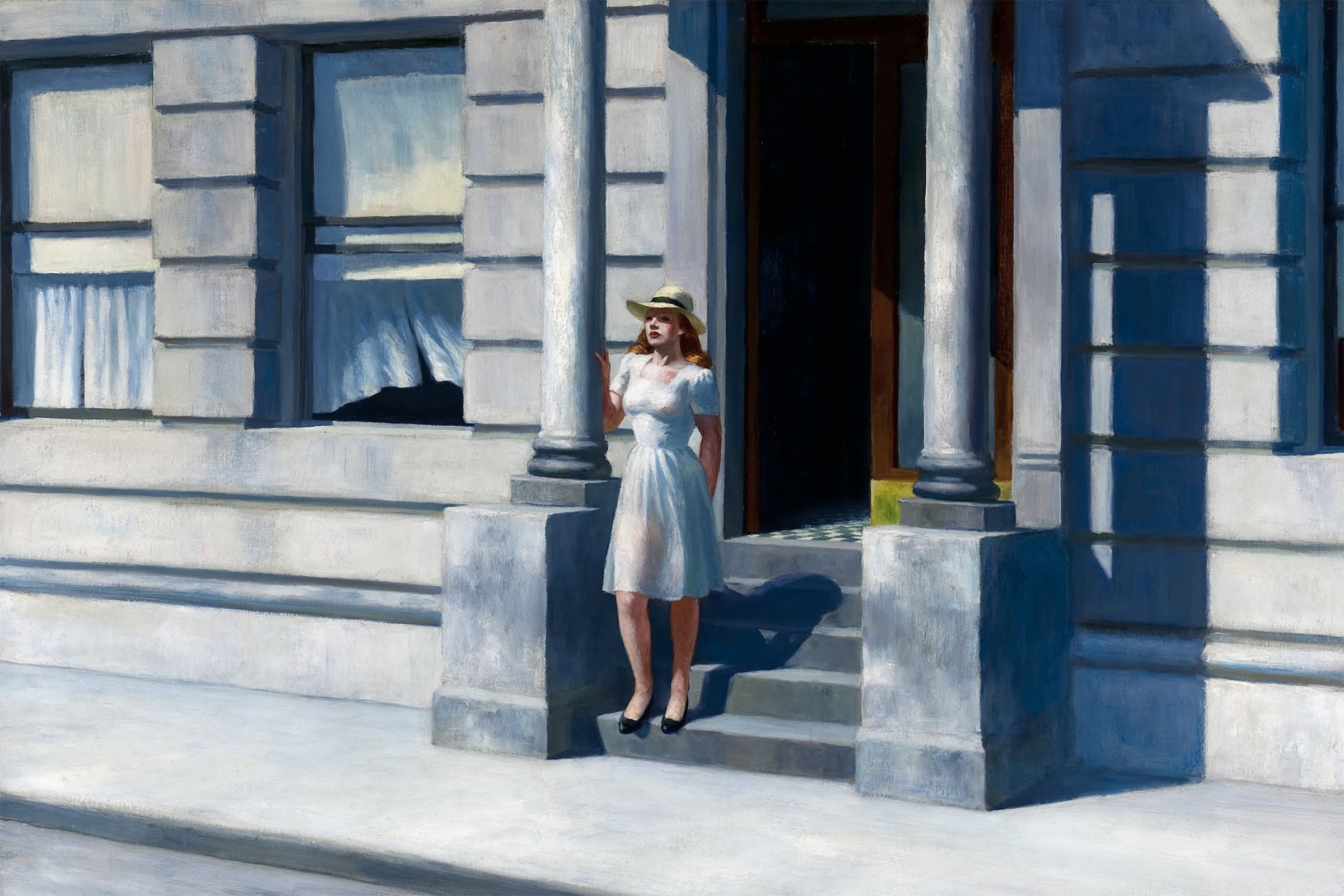Stretching the capacity of a picture to take us elsewhere, but perhaps in seeing the blinding light here, some of us might remember a tingle of warmth on our skins. There’s proper artistic swagger here: the billowing curtain and dark doorway – hinting at a turbulent interior life – the exquisite crispness of the woman’s dress. But there’s cruelty too. Hopper so often portrays women as alone and exposed, only their style and superficial beauty for shelter. She emerges into the sunlight at the mercy of her surroundings (and us), a study in being alone. She has her solitude – “the most precious thing one can ask in the modern world” according to Burgess – but she’s also endangered and fatally weak: the only support she has is the pillar, and that’s no life raft. This is what Edward St Aubyn describes as “the shock of standing under the wide pale sky, completely exposed. This must be what the oyster feels when the lemon juice falls”.

 Simeon with the Infant Jesus – Rembrandt
Simeon with the Infant Jesus – Rembrandt